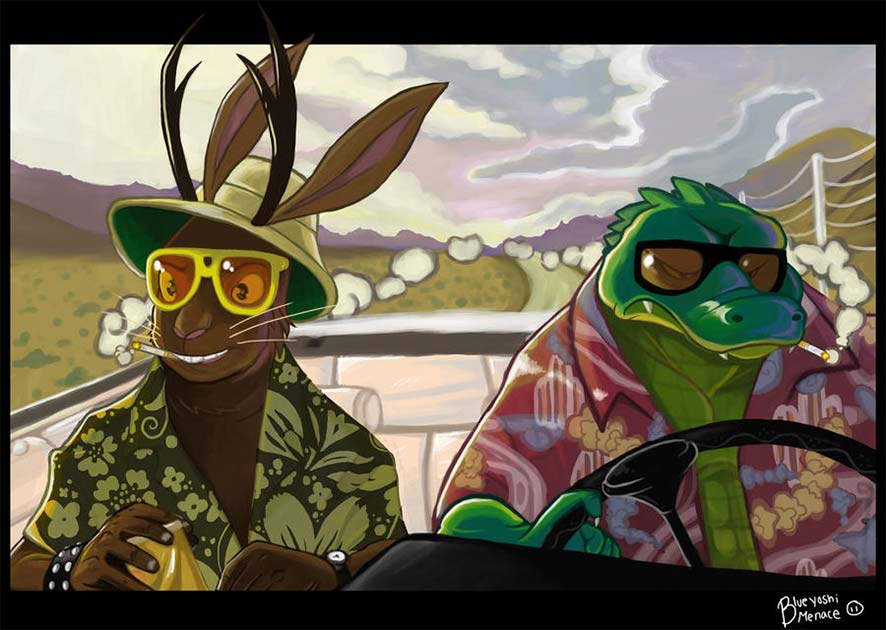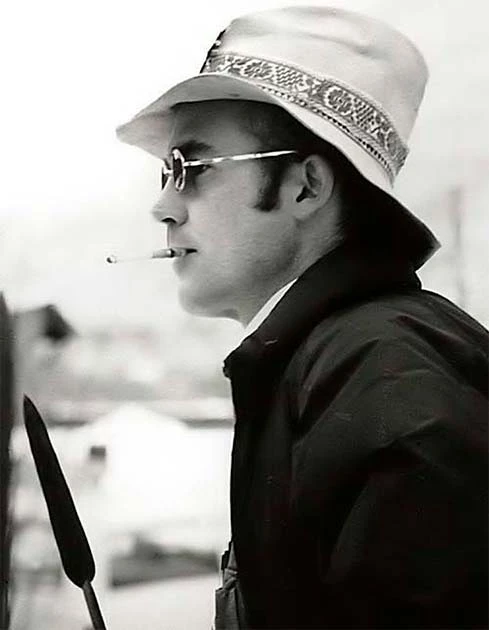In the annals of counterculture history, certain figures emerge as both mysterious and iconic, leaving an indelible mark on the zeitgeist of their time. Oscar Zeta Acosta, an attorney, politician, and writer, is one such figure.
Best known as Hunter S. Thompson’s larger-than-life companion, Acosta’s life is a tapestry woven with activism, literature, all leading to a mysterious disappearance. There are numerous theories as to what happened with Acosta but with a figure so controversial in his own time it can be hard to separate fact from fiction.
What happened to Oscar Acosta? Was it an accident, a drug deal gone wrong or something even more sinister?
One of God’s Own Prototypes
Acosta was born on April 8, 1935, in El Paso, Texas to Manuel Acosta, a Mexican immigrant, and his wife, an El Paso native, Juanita. They weren’t a wealthy family and while Acosta was the third child born, he was the second to survive.
While Acosta was still a child his family moved to a small rural community of Riverbank near Modesto, California. While there his father was drafted during WW2, and the hard times became even harder.

As a young man, Acosta followed in his father’s footsteps and joined the military, opting for the United States Air Force. It turned out to be a poor fit. Acosta’s naturally rebellious nature and dislike of authority quickly got him discharged for poor conduct and unruly behavior.
After leaving the Air Force Acosta moved on to Modesto Junior College and then San Francisco State University where he took a creative writing course. Acosta was much better suited to the academic world and became the first person in his family to graduate college. At the age of 31, he took his education one step further and began taking night classes at the San Francisco Law School, passing the bar in 1966.
Acosta had a strong moral streak, and the following year began representing locals as an antipoverty attorney for the East Oakland Legal Aid Society. His activist mentality led him to move to East L.A. in 1968 where he became an activist attorney for the Chicano Movement.
Also known as the El Movimiento, this was a group dedicated to taking on structural racism, encouraging cultural revitalization, and empowering the ethnic identity of Mexican Americans by rejecting assimilation. Safe to say a lot of authority figures of the time saw them as a controversial bunch.
- Rasputin: the Strangest Things About Mad Monk (Video)
- Pythagoras: Seven Strange Facts about the Philosopher
Acosta worked hard defending activists and took on several high-profile cases, including defending students who took part in the East L.A. walkouts of 1968, members of the paramilitary Brown Berets, and Rodolfo Gonzales, a leader of a Denver urban rights group. His client portfolio and controversial tactics in the courtroom won Acosta few fans amongst the local law enforcement in L.A. who took to following and harassing him.
This harassment eventually led Acosta to turn his hand to running for office in 1970. He decided to run for sheriff against incumbent Peter J. Pitchess. He ran on the platform that if he won, he would do away with the Sheriff’s Department as it was then and rebuild it entirely from the ground up.

Being jailed for two days for contempt of court during his campaign didn’t help Acosta much. While he won around 100,000 votes, Pitchess ran away with $1.3 million. Acosta lost the race for sheriff, but his campaign put him squarely in the public eye and left him with even more powerful enemies.
In 1972 Acosta put his creative writing degree to effective use and started writing. His first novel, Autobiography of a Brown Buffalo, followed the exploits of a lawyer fighting for the rights of the oppressed. Sound familiar?
A year later he published The Revolt of the Cockroach People. Even more controversial than his first book, this novel was a fictionalized version of the 1970 Chicano Moratorium (an anti-war Chicano movement opposed to the Vietnam War) and also told the true story of the death of Ruben Salazar, a civil rights activist, and L.A. Times writer who many believe was unlawfully killed by an L.A. deputy. Both books won some critical acclaim but never achieved widespread commercial success.
Acosta and Hunter S. Thompson
The friendship between Acosta and renowned American author Hunter S. Thompson was a strained one. The two first met in 1967 and quickly became friends. In 1971 Thompson wrote a piece on Acosta and his exploits defending minorities and Acosta inspired Thompson to cover the death of Ruben Salazar in a piece called Strange Rumblings in Aztlan in Rolling Stone Magazine.
The two worked on this article together, traveling to Las Vegas so that they could get away from the L.A. police and work in peace. That same year Thompson wrote about his trip with Acosta in his novel, Fear and Loathing in Las Vegas. It led to their first falling out.
Acosta, proud of his Mexican heritage, was offended that Thompson described him in the book as being Samoan. He initially opposed the book being published but eventually settled for having his real name and picture on the book’s dust jacket.
Acosta also felt that Thompson had “stolen my soul. He has taken my best lines and has used me”. He believed that the renowned author had taken his story and used it to make himself even more successful. The two would try and work together in the future, but their friendship had become too fractured.

And then, suddenly, the wild life of this strangest of men came to an unexpected and premature end. Acosta disappeared in May 1974 while traveling in Mazatlán, Mexico. To this day no one knows what happened to him.
Just before he disappeared, he telephoned his son, Marco Acosta, telling him he was “about to board a boat full of white snow”. Draw what inferences you like from that, but as last words go it was more than a little cryptic.
Acosta’s body has never been found but there are numerous theories as to what happened to him. The most plausible comes from his son who stated, “The body was never found, but we surmise that probably, knowing the people he was involved with, he ended up mouthing off, getting into a fight, and getting killed.”
Hunter S. Thompson had a similar theory. Three years after Acosta’s disappearance he wrote his old friend an obituary/investigation in Rolling Stone magazine called The Banshee Screams For Buffalo Meat.
In it, he described his old friend as “a stupid, vicious quack with no morals at all and the soul of a hammerhead shark.” This might sound damning, but Thompson was known for berating his friends, often meaning it in a humorous rather than offensive manner. Still, it made Acosta sound like a man who might get himself killed in a bar fight.
In the piece, Thompson also called Acosta a powerful attorney and civil rights spokesman who had made himself many enemies. According to Thompson, Acosta struggled with amphetamine and LSD abuse. The author believed that the lawyer had either been taken out by drug dealers he had offended or had perhaps been the victim of a political hit.
Most other theories take a similar approach. Perhaps high on LSD Acosta wandered into the wilderness and died of an overdose. Or maybe suffered a major breakdown brought on by his drug abuse and killed himself. Without a body we’ll likely never know.
Myriad Contradictions
Oscar Zeta Acosta’s life was a complicated one. By all accounts, it sounds like he was a man led by his morals and a man dedicated to doing the right thing and defending the downtrodden. It also sounds like he wasn’t easy to get along with.
We know that through his work as a lawyer, political campaigning, and novels Acosta made many enemies. We also know not all of his acquaintances were angels and he likely had a drug problem. Sadly, that is all we know.
The truth of Acosta’s disappearance will probably never be uncovered. If he was murdered either in a fight or by assassination, it was well and truly covered up. Just remember he wasn’t the first, or last civil rights figure to meet a grizzly end.
Top Image: Oscar Zeta Acosta in Las Vegas in 1971. Source: Cashman Photo Enterprises, Inc, Random House / Public Domain.